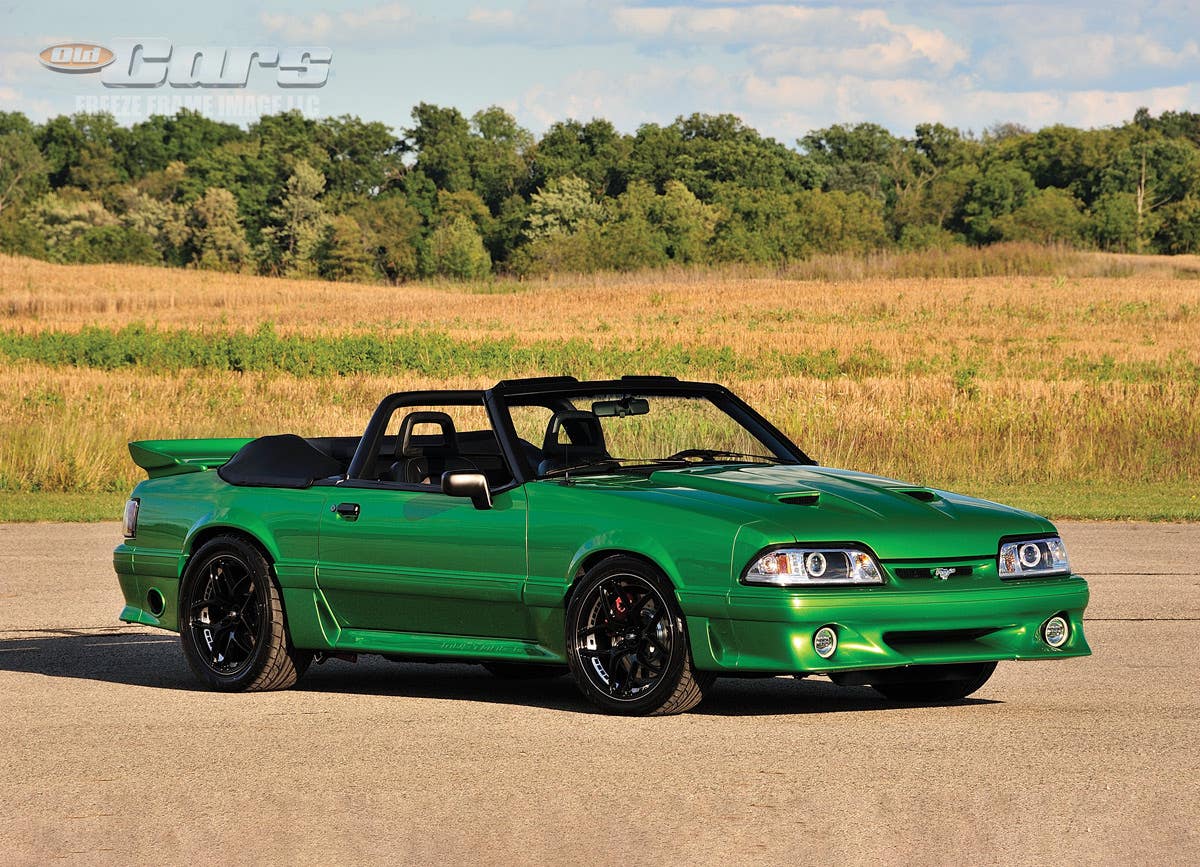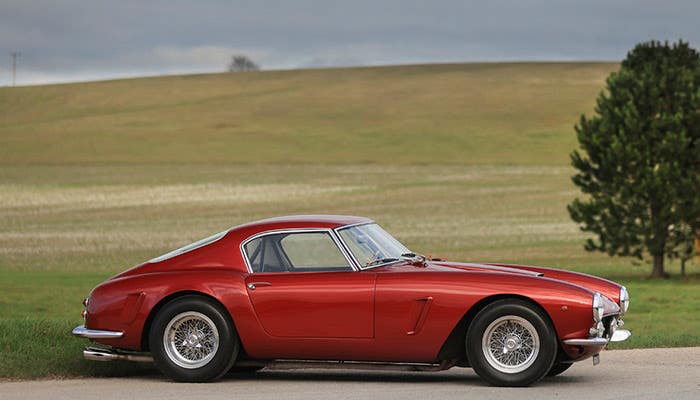Calculating a Car Collection
Factoring fun and finances in multiple-vehicle ownership By Gerald Perschbacher, LL.D. The desire to own one collector car often leads to owning another, then another, and soon a collection is…
Factoring fun and finances in multiple-vehicle ownership
By Gerald Perschbacher, LL.D.
The desire to own one collector car often leads to owning another, then another, and soon a collection is formed. If this is your plan, then take some time to pause and calculate what it means to own a collection.
One vehicle does not a collection make; it takes at least two. If you start with one, sell it to buy another, then you are a collector. However, a collection is made of multiple vehicles owned simultaneously.
Some old car hobbyists consider buying a nice piece of property on which to have their home and with sufficient space to erect a building to house their collection. That’s a good idea if they control their buying and keep it within the limit of that space. Problem is, bargains and opportunities arise to get one more car of their dreams, and soon space is pushed to the limit. Cars are crammed in the building and it becomes necessary to thin the collection or expand the building.
Some collectors take a different tact. They obtain a separate building to own as a private warehouse (or museum) away from the home, which allows for flexibility. If a move to a different homestead is in their future, then the car-collection-warehouse still remains.
Regardless, there are necessities to consider for a collection. Space is the first. Anticipate 200 sq. ft. of space (10x20 feet) for each collector car to be displayed and garaged, which allows for basic walk-around and maintenance space. Extra space should be dedicated for entry/exit and rearranging or removing vehicles in a planned and orderly fashion. If your collection is anticipated at five cars, you’ll need a minimum of 1,000 sq. ft. plus extra space depending on the building’s shape and the entry point of the structure.
A collection needs to be insured. Even if you eliminate the option of installing electrical connections to dodge the risk of electrical fires, you can still be threatened by a wildfire, by a strike of lightning or by a malfunctioning car that pulls up to the building (even inside) and breaks into flame. Some collectors prefer to have an all-steel building to keep fire threat to a minimum, but each car (with oil and gas in its system and non-retardant interiors) is a potential risk once fire erupts. Calculate the values of each car in your collection and cover them accordingly. Anticipate all the costs involved and realize you will need to meet that bottom line each year.
Your building will need insulation and general upkeep, plus possible electrical system and security installation. Roof repairs may become necessary. The decision will need to be made on heating or even air conditioning to keep the collection at a regulated state to uphold preservation. A controlled indoor climate is the main defense against high humidity and condensation, two culprits that feed the advance of rust and decay. Calculate the factors and keep those in mind before your dream building is fully realized.
You can offset costs by allowing others to rent space. Some collectors prefer to know the renter before making a commitment. Check with local space-rental businesses and set your price accordingly. You probably will not turn a profit, but a little here and there will help with building maintenance and upkeep. A collector may have only three cars but plans ahead and constructs or buys a building with enough space for 10 or more cars, rents out their available space, then reclaims it car by car in the future as his or her collection matures.
Calculate the need for upkeep and attention. Tires degrade even when not in use. You may need to jack up your car for storage or exercise the tires to maintain condition. Buying jacks or wheel dollies may add to your costs but are one-time expenditures. A car collection must have attention given to maintaining fuel, mechanical and electrical systems if those are to be kept in top condition. Who will do that work? How many hours per week or month (on average) will be needed? Some systems need extra attention. Hydraulic automatic window systems of the 1940s and into the early 1950s will need attention since windows may tend to slowly lower as fluid and pressure lessens. Electric power windows may have their idiosyncrasies borne from age and can result in the need for replacement parts. Air conditioning systems carry their own needs for upkeep. Anticipate the options.
Then there is the matter of appearance. Cars need more than dusting. A film may develop on surfaces and need occasional cleaning. If your cars are not easily removable to the outdoors for a wash, then you will need to do a wipe down at the spot. The choice of car covers is viable, which will add to your costs as you buy one per car. So calculate the purchases and the time spent in covering and uncovering, etc.
Interiors are a special matter. Closed cars with leather interiors need to have an occasional fresh exchange of air and require leather preservative to be applied now and then to keep surfaces supple and avoid premature cracking. Woolen interiors necessitate protection from vermin so an inhibitor (moth balls, for example) are a safety measure. Regular checking of interiors is encouraged in order to hinder any advance of a problem. If your collection includes an open touring, roadster or convertible, you may plan to cover the interior compartment and add repellent to render good results. Additionally, vinyl interiors on newer cars need freshening since the natural release of gases from vinyl can cause a film to adhere to hard surfaces inside, especially noticeable on the windshield.
Keeping your collection cleaned and polished retains good exteriors and interiors. Calculate the hours needed per month or year and schedule this with all the other attentions needed.
By this time, you may have calculated yourself out of thinking about owning a collection. But before you torpedo the whole idea, let’s examine the benefits.
FUN. Car collectors readily admit that, despite the amount of cost and work, enjoyment far outweighs responsibilities. A collection is the reflection of the owner’s values and, thusly, is a reaffirmation of the individual. Visitors often reflect some of the same virtues and also feel fortified. Some of those values may be quality workmanship, pleasing design, appreciation of history and innovation, among others. There is immense joy in realizing the fun others have when they see the collection. For owners who take time to provide a walking tour for visitors, it is a time to share the hopes and dreams of each car maker represented. Thus, it becomes an educational endearment.
ACCOMPLISHMENT. When the pharaohs had their pyramids built, the effort was a monument to themselves, their society, their achievements and their impact. A fine car collection may reflect similarly, without the immensity of ancient times. Indeed, a fine car collection is a monument to the owner, to mankind, to creativity and to progress. Satisfaction in seeing (and establishing) a collection is a shared victory.
GENERAL FULFILLMENT. A collector likes to achieve what few others have done. This is why no two collections are the same, from what I have witnessed. Each is unique which, by itself, brings its own measure of fulfillment.
PRESERVATION. An old car saved today may be a treasure tomorrow. That may come in a higher dollar value or in total awe and appreciation for the car as a survivor with all its virtues of fit finish, function and appearance. Either way, a feeling of accomplishment results.
VALUATION. Loans have been granted by financial institutions based on the value of a collection, which can provide a springboard for greater things.
So, if you choose to own a collection, calculate. Decide wisely. If you choose not to own a collection, then at least offer personal support to others who do, for they carry a torch for the hobby.







